“The Tokyo Exhibition in Uyeno Park, occupying the former site of the Monzeki Temple was formally opened on Wednesday … The ceremony of Wednesday was attended by some ten thousand invited guests and was witnessed by large crowds of the public who had gathered in the vicinity. Among the notabilities present were Princes and Princesses of the Blood, peers and peeresses and many leading Japanese and foreigners both official and civilian.
“… The idea of the present exhibition was conceived in 1905 when the Tokyo City Assembly decided to hold a competitive industrial exposition on a small scale. About this time, the Tokyo Union for the Encouragement of Industry and the Tokyo.
“Real Business Union presented memorials to the Tokyo Government to hold an exhibition as a means of encouraging post bellum industrial development. Similar proposals were also tendered by leading business men. Adopting the foregoing advice, the Tokyo Government brought about a resolution to hold the present Exhibition with the intention that it should remain open [from March 20] till July 31st.
“The Exhibition will be open at 8 a.m. and closed at 4 p.m. every day, but this arrangement will be subject to alteration. The admission will be sen 10 for adults, sen 5 for children 5-12 years old. Children under 5 years will be free.”
– Japan Weekly Mail, March 23, 1907
See also:
Ferris Wheel at the Meiji (Tokyo) Industrial Exhibition, 1907
“Took in the Exposition today …”, 1907
Japan-British Exhibition, 1910
Peace Commemorative Exposition, Ueno, 1922
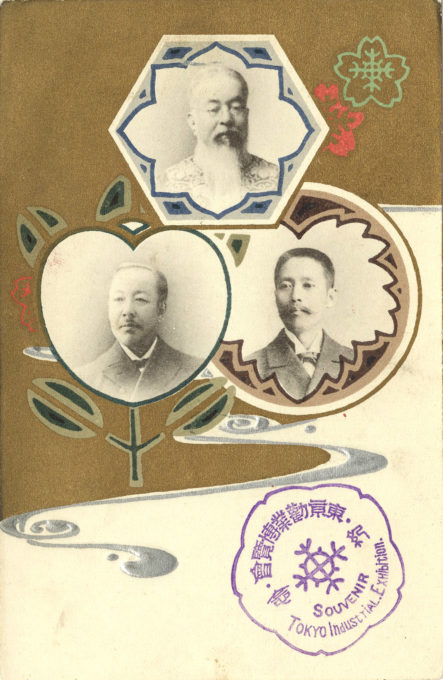
Principal organizers of the 1907 Meiji (Tokyo) Industrial Exhibition, 1907. Top: Baron Senge Takatomi, Governor of Tokyo-Fu;
Lower-left: Baron Shimbusawa Eiichi, President, Tokyo Chamber of Commerce.
Lower-right: Ozaki Yukio, Mayor of Tokyo City.
“The Japanese experimented with domestic fairs early in Meiji, one of them in the Yoshiwara. The grand exhibition that called itself the First National Industrial Exhibition occurred at Ueno in 1877, from late summer to early winter.
“The sixth, in 1907, at Ueno once more, remains the grandest of the Tokyo series. Coming just after the Russo-Japanese War, it had patriotic significance, and therapeutic and emotional value as well. Economic depression followed the war, and a need was felt to increase consumption.
“The main buildings, Gothic, in the park proper, were built around a huge fountain, on six levels, surmounted by Bacchus and bathed in lights of red., blue, and purple. A water chute led down to the lower level, on Shinobazu Pond, where special exhibitions told of foreign lands and a growing empire.”
– Tokyo from Edo to Showa 1867-1989: The Emergence of the World’s Greatest City, Edward Seidensticker, 2011
“Several large exhibitions, such as the Second National Industrial Exhibition of 1881 and the Tokyo Industrial Exhibition of 1907, featured spectacular electric lighting and were purposefully scheduled for the cherry-blossom season.
“Thirty-five thousand light bulbs – strung in garlands, adorning a Ferris wheel, immersed in fountains, even backlighting an ‘artificial crescent moon’ – were used at this fair, approximately 4 percent of light bulbs available in Japan at the time.
“Near the main entrance to the exhibition, massive flowerpots arranged with peonies and roses were interwoven with 300 electric bulbs, and elsewhere lighting enhanced the display of a 160-meter long purple and white wisterial trellis. Bonbori paper lanterns and electric bulbs lit the natural cherry trees throughout the park, highlighting them in this fantastic showcase of the blossoming of electric light in Tokyo.
“Natsume Soseki, considered the greatest writer of the modern period, was deeply impressed by the fusion of flowers and light, and in his novel The Poppy (1907) describes the way in which electric light plays a fundamental role in the experience of the exhibition amid the torrents of falling blossoms:
‘If there is even a spark of life in you and you seek evidence of that spark, look then, at the illumination – one cannot but be astounded by it. Those paralyzed by civilization have only to be astounded thus, to realize that they are indeed alive.'”
– Cities of Light: Two Centuries of Urban Illumination, edited by Sandy Isenstadt, Margaret Maile Petty & Dietrich Neumann, 2014
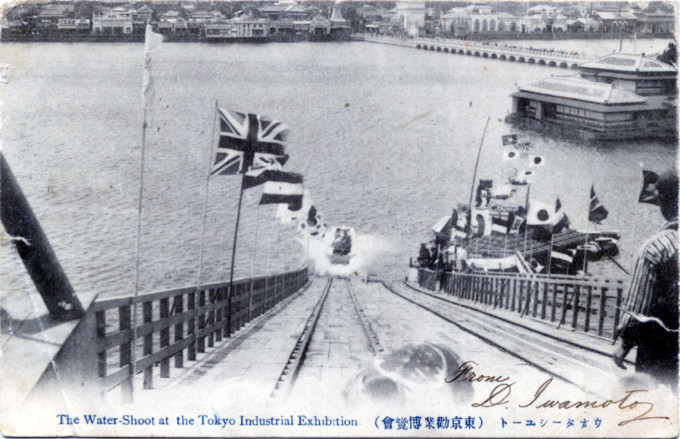
“The Water-Shoot at the Tokyo Industrial Exhibition”, 1907, a new amusement ride at the time also known elsewhere as the “Ship Slip”.
“The exhibition was opened to the general public at 2 o’clock, and will be open every-day till July 31 from 7 a.m. till 6 p.m. The price of admission tickets will be 10-sen on week-days and 15-sen on Sundays and national holidays; tickets for children between 6 and 12 years of age being sold at 5-sen on week-days and at 10-sen on Sundays and national holidays.
“It is understood that the plans as laid out for the Tokyo Industrial Exhibition are on a larger scale than were those of the national exhibition held at Osaka in 1903. The remarkable development of the country in commerce and industry after a victorious period of warfare will be, I believe, fully displayed in the exhibition.
“… The exhibition is situated in Uyeno park and grouped around Shinobazu pond. The grounds are divided into three compounds.
“The first compound is located in front of the Imperial Museum (Takeno-dai) and extends over Cherry Hill (Sakuraga-oka). This covers the main part of Uyeno park. The second compound comprises the whole of the ground surrounding Shinobazu pond, the northern part being divided from the southern part by two gates, the latter part being given up to various small shops where are to be found various small articles for sale. The third compound is in front of the Imperial Library.”
– The Tokyo Industrial Exhibition, by Charles A. Francis, American Machinist, June 13, 1907
- Deco commemorative postcard, Meiji Industrial Exhibition, 1907.
- Tokyo Meiji Industrial Exposition, Ueno Park, 1907.
- Meiji Industrial Exhibition, commemorative postcard, 1907.
- Meiji Industrial Exhibition, commemorative postcard, 1907.
- Meiji Industrial Exhibition, commemorative postcard, 1907.
- Meiji Industrial Exhibition, Industrial Museum, 1907.
- Exposition Main Hall, from Ueno Park, 1907.
- Machinery Hall, Meiji Industrial Exhibition, exhibit hall, 1907.
- Mitsubishi pavilion, Meiji Industrial Exhibition, 1907.
- Meiji Industrial Exhibition, gate entrance from Ueno Station, 1907.
- Main entrance, Meiji Industrial Exhibition, 1907.
- Exhbition halls, Meiji Industrial Exhibition, 1907.
- Formosa pavilion, Meiji Industrial Exhibition at Ueno, 1907.
- Fine Arts museum at the Meiji Industrial Exhibition, 1907.
- Indoor swimming pool, Meiji Industrial Exhibition, 1907.
- “Foreign Goods” exhibition hall, Meiji Industrial Exhibition, 1907.
- Meiji Industrial Exhibition, 1907.
- Red Cross pavilion, Meiji Industrial Exhibition, 1907.
- Meiji Industrial Exhibition, 1907.
- Meiji Industrial Exhibition, 1907.



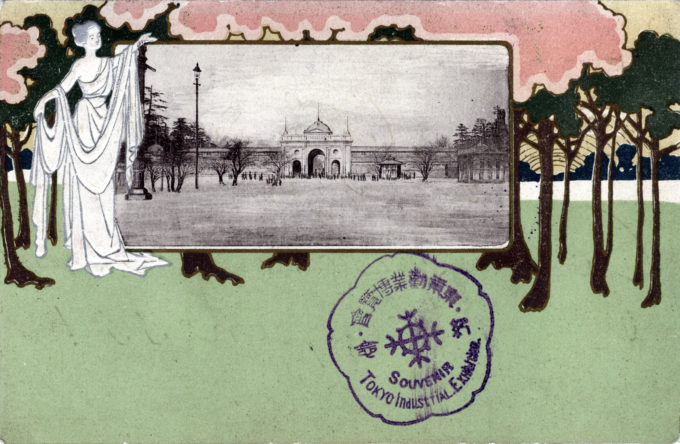

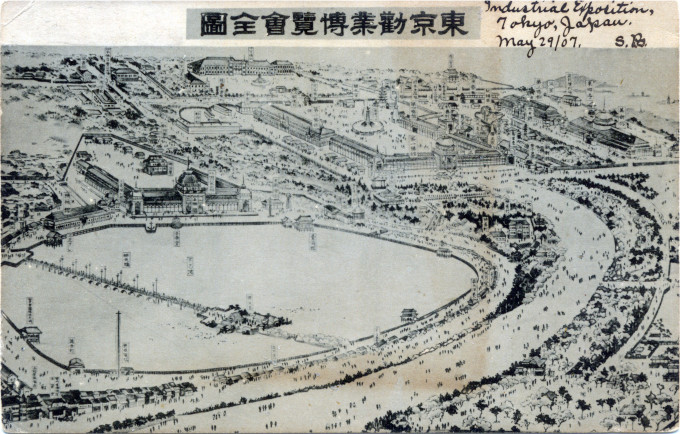

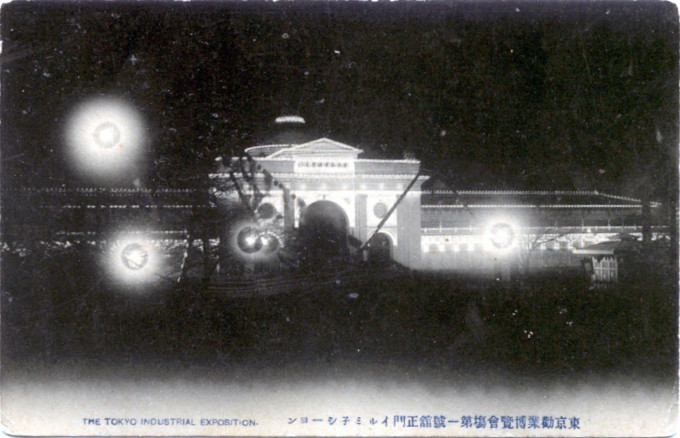
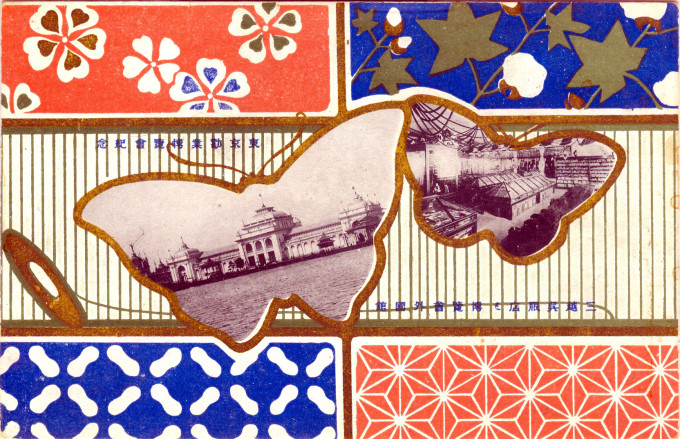
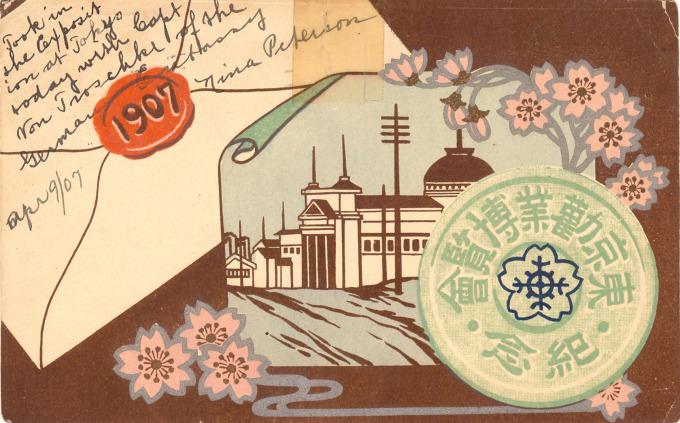
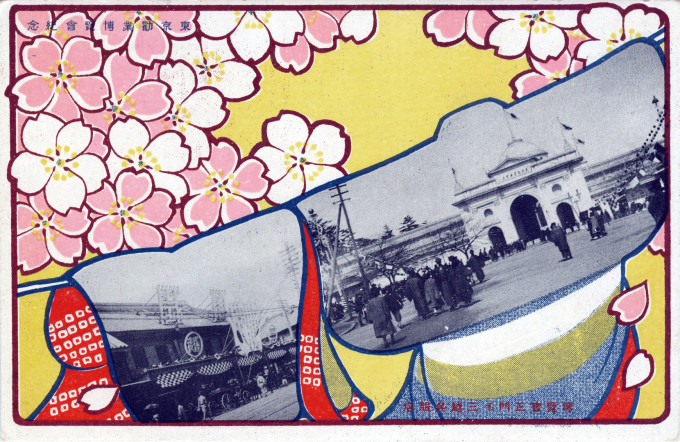
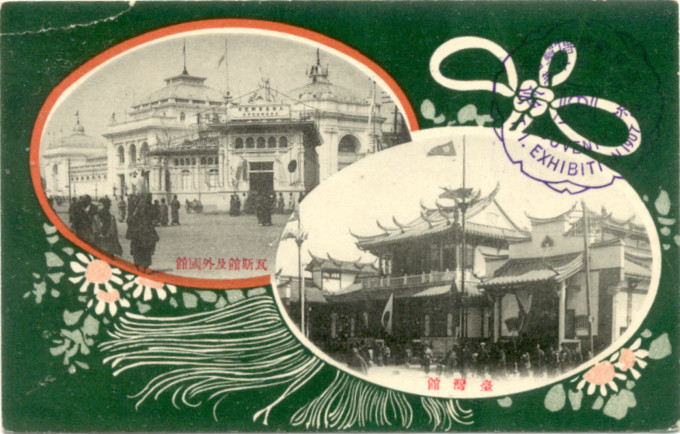
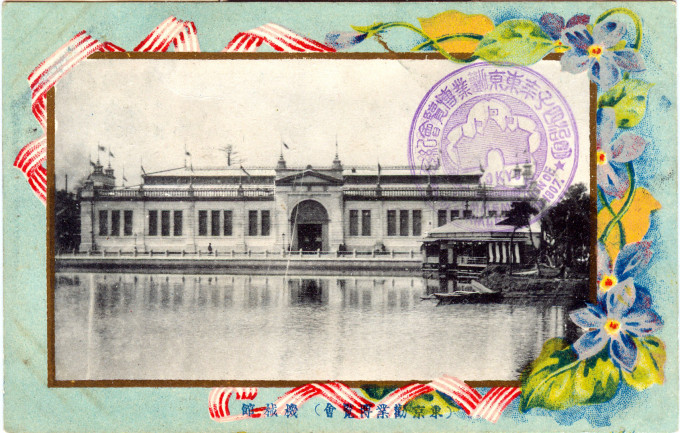
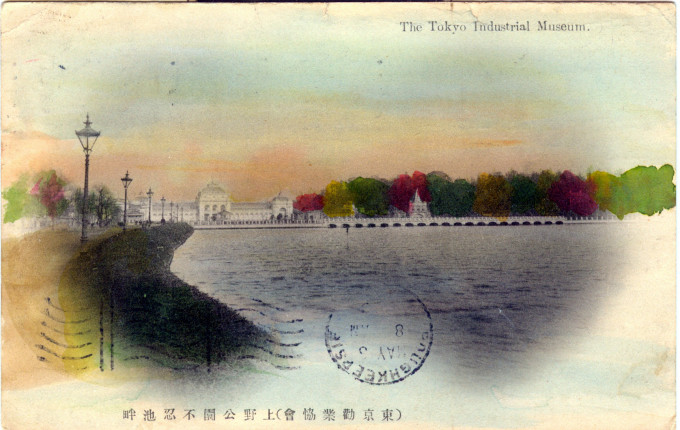
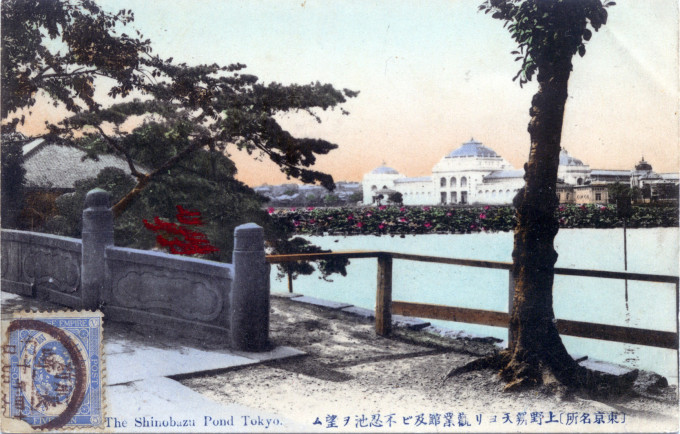
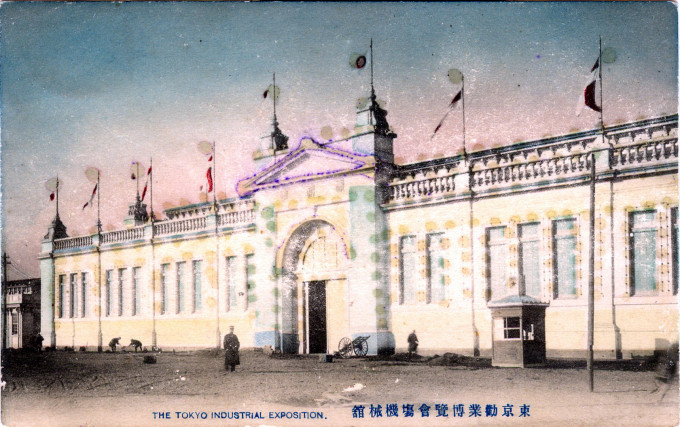
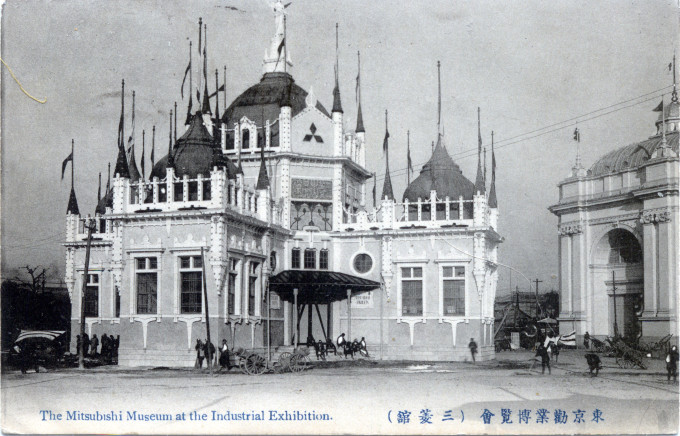
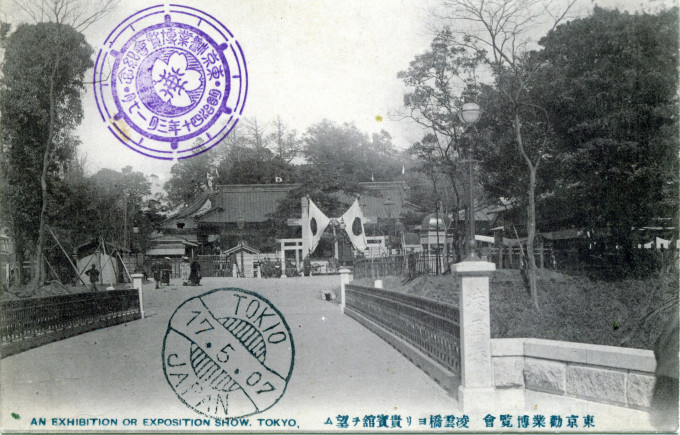
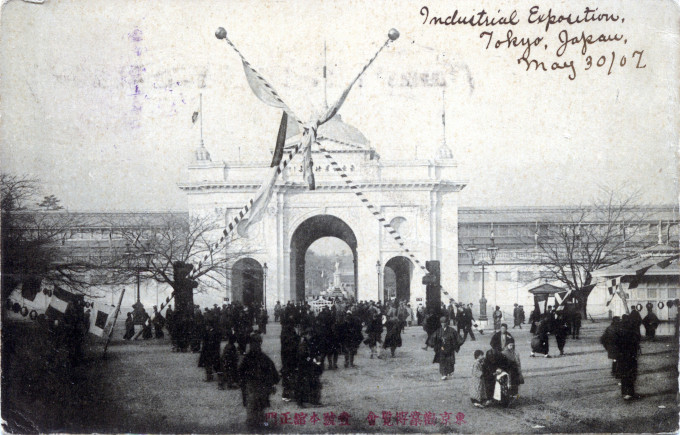
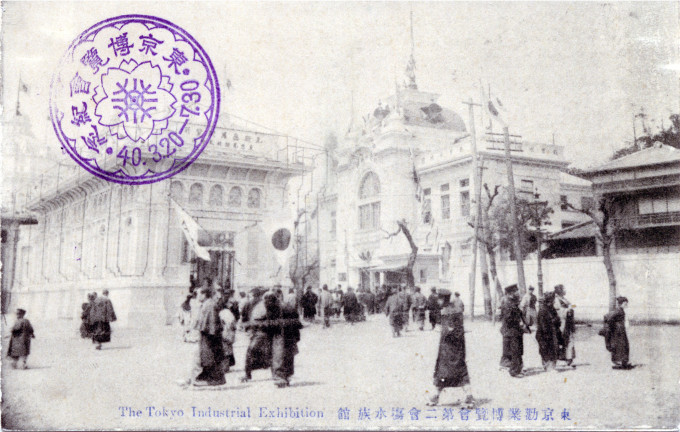
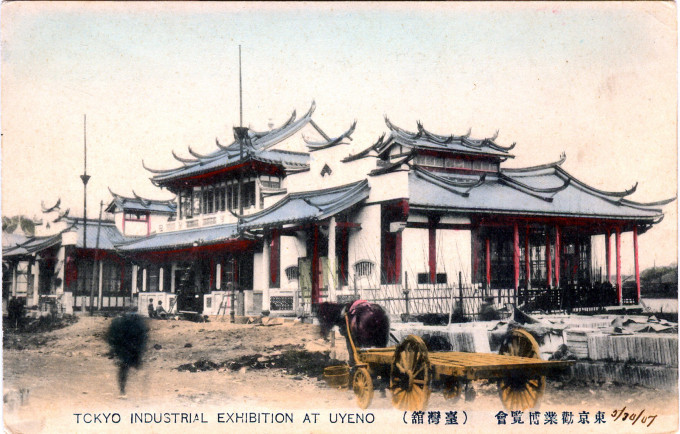
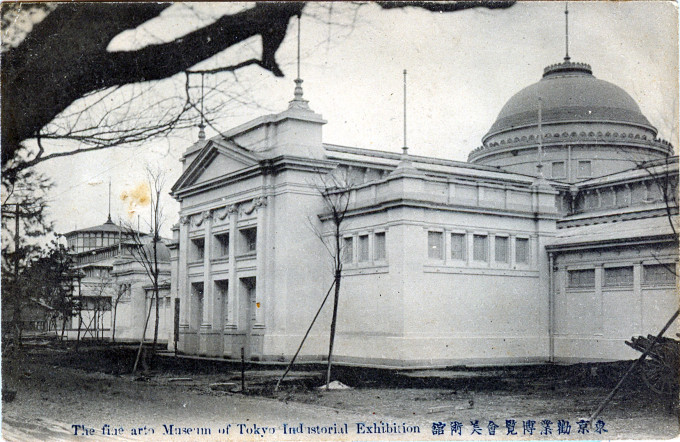
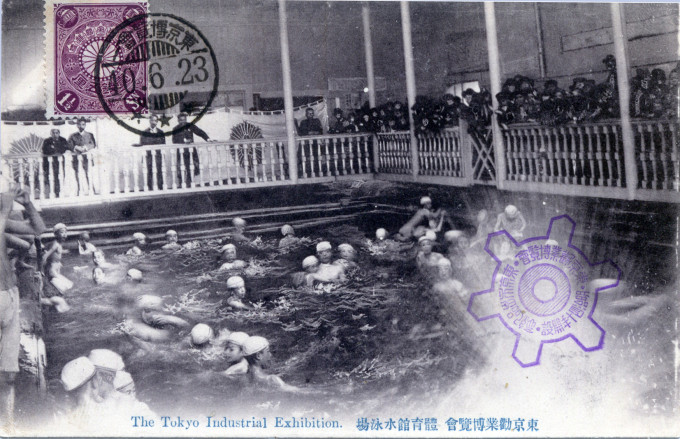
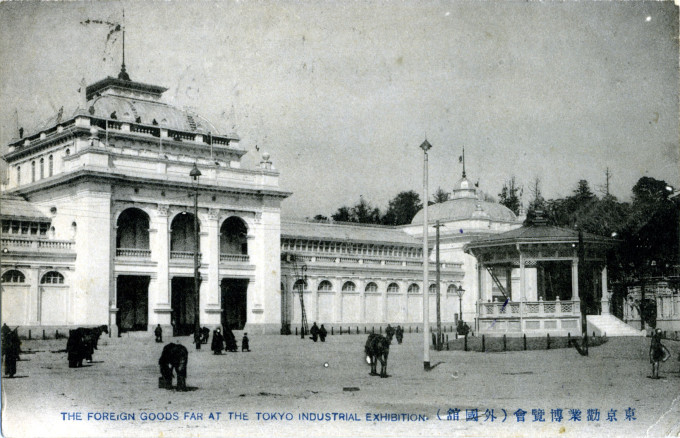
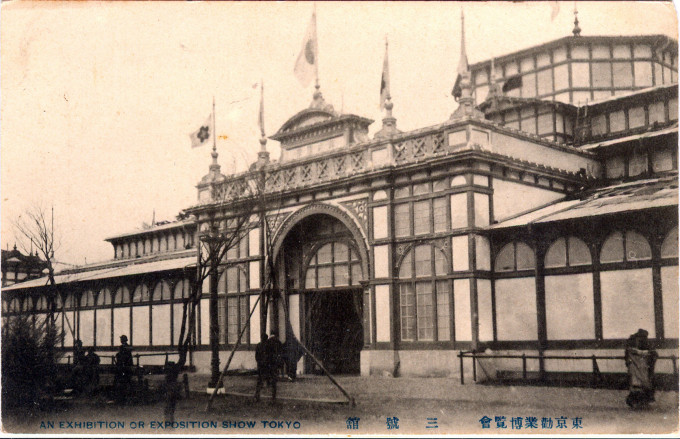
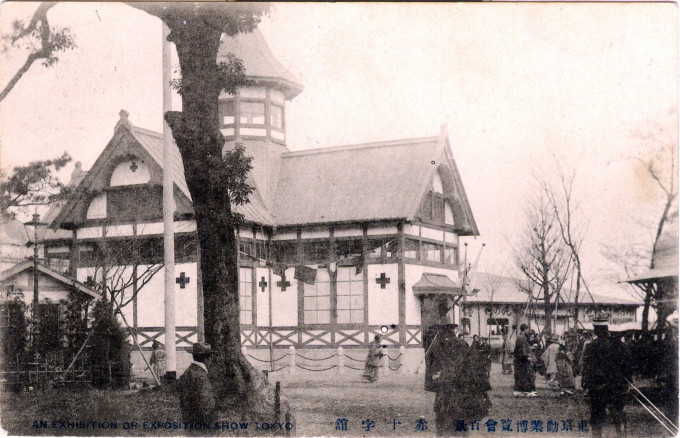
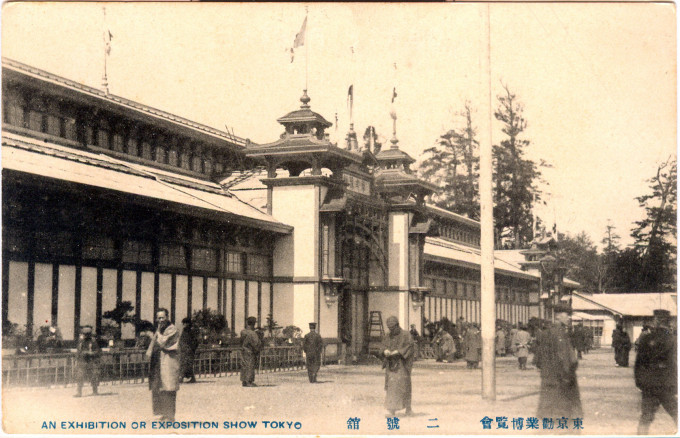
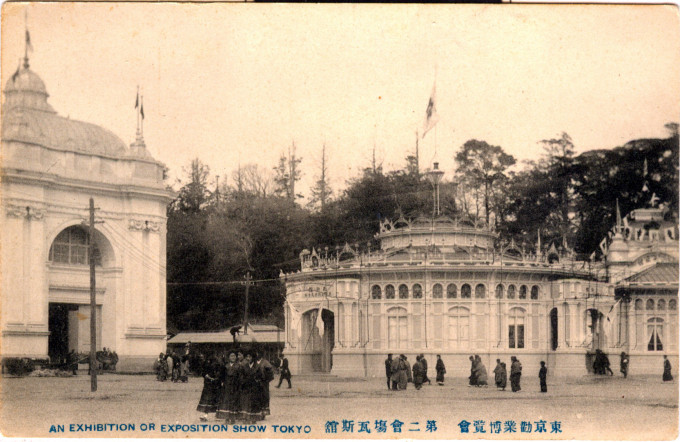
Pingback: Ueno Park, c. 1910. | Old Tokyo
Pingback: Lotus Flower at Shinobazu Pond, Ueno, c. 1910. | Old Tokyo
Pingback: Ferris Wheel at the Tokyo Industrial Exhibition, Tokyo, 1907 | Old Tokyo
Pingback: “Took in the Exposition today … ,” 1907 | Old Tokyo
Pingback: April 8, 1907 | Old Tokyo
Pingback: Exposition of Shining Technology (2,600th National Foundation Anniversary), 1940. | Old Tokyo
Pingback: Taisho Exhibition, Ueno Park, 1914. | Old Tokyo
Pingback: Ueno Panoramakan (Ueno Panorama Theatre), Ueno Park, Tokyo, c. 1910. | Old Tokyo
Pingback: Japan Electrical Exhibition, Ueno Park, Tokyo, 1918. | Old Tokyo
Pingback: Hiroshima Showa Industrial Exposition, 1929. | Old TokyoOld Tokyo